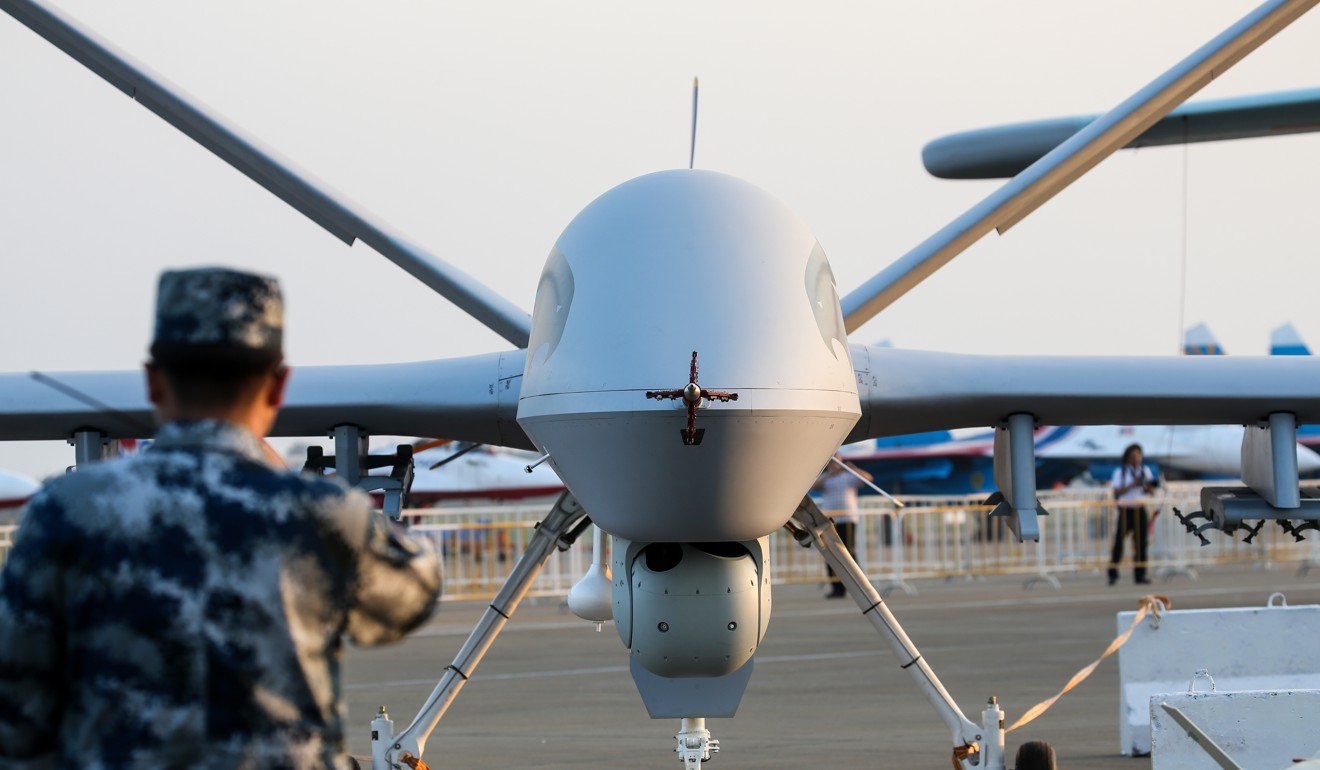From WSJ
The New Arms Race in AI
China is making big investments in artificial intelligence, looking for military advantage—while the Pentagon is determined to maintain its edge.
ILLUSTRATION: SEAN MCCABE PHOTOS: STEPHEN SHAVER/ZUMA PRESS (SOLDIER); LINTAO ZHANG/GETTY IMAGES (XI)
By
Julian E. Barnes and
Josh Chin
March 2, 2018 11:47 a.m. ET
Four years ago, planners at the Pentagon reviewed estimates of China’s growing military investments with what one called a “palpable sense of alarm.” China, the planners determined, was making advances that would erode America’s military might—its ability to project power far from its shores. The search began for technologies that could give the U.S. a new warfighting edge against its rival.
The officials were particularly impressed by one artificial-intelligence project. The program could scan video from drones and find details that a human analyst would miss—identifying, for instance, a particular individual moving between previously undetected terrorist safe houses.
“That was the ‘Aha!’ moment I had been looking for,” said William Roper, then the head of the Pentagon’s Strategic Capabilities Office. His superiors quickly latched onto the potential of America’s world-leading efforts in artificial intelligence. The U.S. could maintain its advantage, they hoped, by exploiting the growing ability of computer systems to adapt rapidly to novel conditions, respond autonomously and even make certain decisions within rules set by programmers.
The problem, according to U.S. officials, is that China’s People’s Liberation Army was closely watching the Pentagon’s technology search, and some of its officers soon had an “Aha!” moment of their own. The turning point was March 2016, said Elsa Kania, a specialist on Chinese military innovation at the Washington-based Center for a New American Security. That was when
in the ancient Chinese game of Go. The outcome, she said, persuaded the Chinese military that AI could surpass the human mind and provide an advantage in warfare. Last July, China unveiled plans to become the world’s dominant power in all aspects of artificial intelligence, military and otherwise, by 2030.
‘The Chinese have done a good job of adopting the American strategy and using it against us.’
The U.S. now finds itself in an escalating AI arms race. Over the past two years, China has announced AI achievements that some U.S. officials fear could eclipse their own progress, at least in some military applications. “This is our Sputnik moment,” said Robert Work, the former deputy secretary of defense who oversaw the Pentagon’s move into the new field.
There should be no doubt that the Chinese military is chasing transformative AI technologies, said retired PLA Maj. Gen. Xu Guangyu, now a senior researcher at the China Arms Control and Disarmament Association, a government-supported think tank. “China will not ignore or let slip by any dual-use technology, or any technology at all, that might improve the ability of our military to fight, our awareness, or our ability to attack,” he said.
American F-35 fighter jets use AI to evaluate and share radar and other data among pilots, expanding their battlefield awareness. PHOTO: CHRISTINE GROENING/PLANET PIX/ZUMA PRESS
U.S. universities and corporations remain the world’s leaders in AI and related technologies, and American researchers continue to patent the most important technologies. Chinese experts say that their country is playing catch-up, citing the expertise in the U.S. and the Pentagon’s long history of driving innovation through its Defense Advanced Research Projects Agency, or Darpa.
But the Chinese military has moved to copy the Pentagon’s model. Two years ago, the PLA elevated and reorganized its science and technology branch, aiming to turn it into a “Darpa with Chinese characteristics,” according to Tai Ming Cheung, an expert on the Chinese military at the University of California, San Diego. The Chinese government is also building national laboratories in the mold of America’s famed Los Alamos, and because of its deep involvement in industry at every level, Beijing can achieve more integration between military and civilian AI investments.
“The Chinese have done a good job of adopting the American strategy and using it against us,” said Chris Taylor, chief executive of Govini, a big-data and analytics firm that has studied government investments in AI. “Not too many years ago we would say China steals information and that is how they innovate. That is not where they are anymore.”
Fueling the AI race is processing power, an emerging area of strategic competition between China and the U.S. Chinese state media reported in January that researchers with the National University of Defense Technology and National Supercomputer Center in Tianjin had made a breakthrough in building a conventional supercomputer at exascale—10 times faster than today’s supercomputers—scheduled for completion by 2020. “That’s a revolutionary, generational leap up,” said Dr. Cheung.
China is also advancing in quantum information sciences, a field that could give a big boost to AI and provide other military advantages. The complex research capitalizes on the ability of subatomic particles like photons to exist in multiple states simultaneously and to mirror each other across vast distances. Breakthroughs in the field could enable vast improvements in computing power and secure communication. Strategists see numerous military applications, including the supercharging of artificial intelligence.
Researchers at China’s National Supercomputer Center in Tianjin (shown here) and National University of Defense Technology have made a breakthrough in building a supercomputer 10 times faster than those being used today, state media reported in January. PHOTO: ASSOCIATED PRESS
In the city of Hefei in eastern China, work began last year on a $1 billion national quantum-information-sciences laboratory. Slated to open in 2020, it will build on research already under way nearby in the lab of physicist Pan Jianwei, who led the team that launched the world’s first quantum communications satellite. The project propelled China far ahead of others in transmitting information with essentially unbreakable quantum encryption.
“It’s so fundamentally different, it changes the building blocks of force and power,” cybersecurity expert John Costello said in an interview he gave last month before becoming a senior adviser at the Department of Homeland Security.
For its part, the U.S. military has struggled to establish a partnership with the private sector in developing AI—a serious problem since high-tech firms in the U.S. are conducting the world’s most advanced research and development in the field. Last November, Eric Schmidt, the former executive chairman of Google and Alphabet and the chairman of the Pentagon’s Defense Innovation Board, told an audience of Washington officials at a think-tank event that the obstacles to cooperation include cumbersome government bureaucracy and fear within the tech industry of “the military-industrial complex using their stuff to kill people incorrectly.”
Aware of the problem, the Pentagon set up a tech-industry outreach office in 2015, which has awarded military contracts to AI-focused startups to help nurture technology in which the Defense Department is interested. An Air Force AI team also has been working to strengthen ties with companies and research universities.
‘This is going to change the way we fight wars. ’
The Air Force has embedded a member of its team, for instance, with
researchers working on chips for a neuromorphic computer. The new technology, pioneered by IBM and Darpa, is intended to process information much as the human brain does, performing massive calculations with a fraction of the energy needed by normal computer chips. IBM is due to deliver it to the Air Force this summer—and China has built a new national laboratory working on the same technology.
The Air Force effort is focused on creating something called flexible AI, machines that have multiple ways of learning and evolving, and demonstrate “phenomenally intelligent behavior,” said Doug Riecken, a team member. “I am talking about something far more than playing the game Go.”


